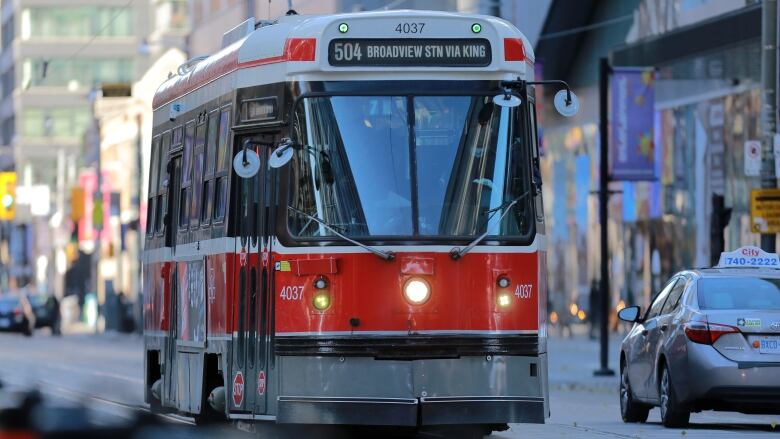Travelling by public transit in Toronto exposes you to damaging bursts of sound, study says
Sudden bursts of loud noise can cause hearing loss and lead to a host of health problems

The sudden screeches, squeals and clangs that are a regular feature of commuting by public transit in Toronto could be contributing to long-term hearing loss and other health problems, says a new study out Wednesday in the Journal of Otolaryngology -Head and Neck Surgery.
Though average noise levels while walking, biking, driving or taking transit fell within safe exposure levels, the study found that sudden bursts of sound that exceed safe decibel levels are a common occurrence while commuting by transit or bike.
- Toronto noise levels prompt concern from city's medical officer of health
- Construction to blame as noise complaints in Toronto rise along with the skyline
"We knew that it was going to be noisy but I was surprised with the frequency of the peaks," Dr. Vincent Lin of Sunnybrook Hospital, one of the study's authors, told CBCNews.
Those spikesput Torontonians at risk ofnoise-induced hearing loss, said Lin.
For example, nearly 20 per cent of the loudest noises on the subway exceeded 114 decibels, which is considered risky if exposurelasts more than four seconds.
Lin saidmetal-on-metal noises, like screeching subway trainwheels or machinery,are the most common culprits.But crowds can also contribute to the problem.

Keele, Spadina stationsamong loudest
To investigate how loud things get on different routes, researchers clipped measuring devices to their collars and fanned out across Toronto over the spring and summer of 2016, gathering 210 sound samples on subways, buses, streetcars, bicycles, sidewalks and in cars.
Researchers concludedthat commuters were exceeding their recommended noise exposure levels in nine per cent of the measurements taken insubways and in 12 per cent of the measurementstaken in buses.
By contrast, noise exposures were not exceeded in streetcars, cars, or while walking.
They also found that noise is louder on subway platforms than inside subway cars, and that Keele, Dufferin, Spadina and Bay stations have the loudest platforms in the system.
Cycling in particular was singled out as the most potentially damaging to hearing, exposing people to larger amounts of dangerous noise than any other way of getting around, with 14 per cent of measurements exceeding recommended levels.

The hearing loss that results from regular exposures to dangerous sound levels can lead to a host of other health problems, said Lin.
"Chronic noise exposure is well associated with chronic health conditions like hypertension, depression These things are just starting to be better understood."
He said using more sound-proofed materials in transit constructioncould minimize risks, and that Toronto's city planners have already shown signs of switching to sound-absorbing materials.
In the meantime, though, Toronto's transit system and streets remain noisy so commuters may want to consider investing in a pair of earplugs.
"Even earbuds that you use to listen to music can be used as ear protectors," said Lin.












_(720p).jpg)


 OFFICIAL HD MUSIC VIDEO.jpg)
.jpg)



























































































